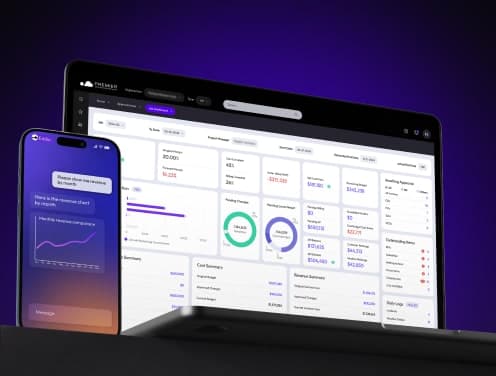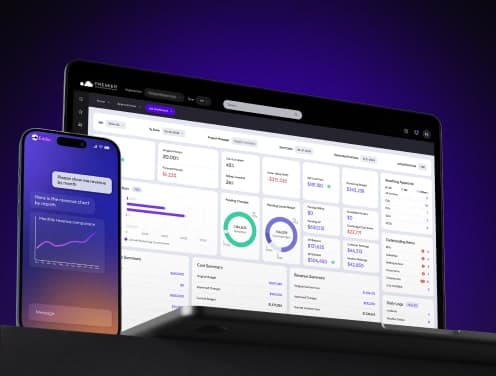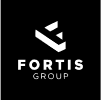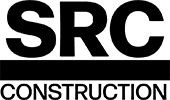
How to Use AI in Construction: A Practical Guide for Project Managers
AI in construction could reshape your project's success story. The numbers tell it all - AI in construction is projected to grow from $2.32 billion in 2022 to a staggering $16.1 billion by 2032.
Here's something interesting - 37% of construction firms already use AI and machine learning technologies, yet many project managers find it hard to put them into practice. AI in construction management has moved beyond theory and become crucial for staying competitive. Industry leaders know this, and 76% of them are putting more money into AI than they did last year.
You can't overlook the concrete benefits AI brings to construction. These technologies could automate up to 30% of work hours across the US economy by 2030. They cut labor costs, make projects move faster, and handle the heavy lifting.
Construction safety remains a huge challenge, with 1,069 worker fatalities recorded in 2022 - that's 9.6 deaths per 100,000 full-time workers. AI-powered tools like drones and cameras now watch job sites live to spot dangers before accidents happen.
AI tools can predict when equipment might fail and automate quality checks. Premier's predictive intelligence features can change how you run your projects completely. This piece will show you the right ways to use AI solutions that bring real results to your construction business.
What Is AI in Construction and Why It Matters
AI in construction uses technology that copies human intelligence to analyze huge amounts of data in real time. It finds patterns, gives insights, and predicts outcomes for construction projects. This technology serves as a catch-all term for AI-powered tools and machinery built for the construction industry.
Construction companies face several challenges. Projects often run over budget and schedule. Safety concerns, low productivity, and worker shortages plague the industry. Construction ranks among the least digitized industries worldwide, which makes it perfect for AI adoption.
AI's development in construction took time. It started with computer-aided design (CAD) in the 1960s, moved to computer-aided manufacturing (CAM) in the 1980s, and evolved into machine learning for predictive maintenance by early 2000s. AI adoption has picked up speed throughout the industry.
Several key technologies power AI's applications in construction:
- Machine Learning: Analyzes past project data to predict outcomes and optimize processes
- Computer Vision: Monitors sites, identifies safety hazards, and inspects quality
- Natural Language Processing: Processes text-based documents and communications
- Predictive Analytics: Forecasts potential issues before they affect projects
- Robotics: Automates physical tasks like bricklaying, painting, and welding
McKinsey research shows AI could improve construction productivity by up to 20% through better project planning and resource management. Companies that use AI-powered safety tools have reduced workplace accidents by up to 25%.
AI touches every stage of construction projects. During design and preconstruction, it helps optimize layouts and building information modeling (BIM). These tools analyze massive data sets to suggest affordable design solutions that cut material waste and build time.
AI-powered drones and cameras watch active construction sites. They track materials, people, and work processes to measure progress against project plans. Teams can spot problems early and fix them quickly.
Smart systems predict when machines might break down and schedule maintenance ahead of time. They study sensor data to spot patterns that show potential equipment failures, which helps avoid costly downtime.
Project managers use AI to learn from past projects and spot possible delays, risks, and better scheduling options. This helps them take action early to keep projects moving forward.
Construction companies have been slow to embrace AI technologies, but that's changing as they see how AI can solve their biggest problems.
Solutions like Premier's AI construction software help construction firms tap into AI's potential to improve project outcomes. Teams can analyze supply chain data, predict equipment failures, and optimize resource allocation based on real-time information.
Project managers can't ignore AI anymore, it's crucial for staying competitive. AI won't replace humans but will make machines better at current human tasks. This lets construction professionals focus on work that needs human creativity and expertise.
Key Technologies Behind AI in Construction
Four key AI technologies are changing how construction projects come to life. Each brings unique ways to improve your project results.
Machine learning and predictive analytics
Machine learning is the foundation of AI in construction. It analyzes big amounts of data to spot patterns that humans might miss. These algorithms get better with time as they learn from each new project's data.
Predictive analytics takes this construction data and helps forecast what might happen next. This technology enables you to spot problems early instead of just reacting to them.
Here's how it works in real life:
- It shows possible delays and budget issues before they happen
- It helps plan resources and schedules better
- It spots safety risks before accidents occur
"Predictive analytics depends upon data, statistical algorithms, and machine learning techniques to make predictions about future events," notes industry experts. BAM Ireland saw a 20% improvement in on-site quality and safety after they started using predictive analytics tools.
Premier Construction Software includes predictive intelligence features that help you spot trends, plan resources better, and reduce risks by finding potential issues early.
Generative design and deep learning
Generative design is changing how we plan projects. You input your design goals, limits, and requirements, and AI algorithms explore all possible design options.
"Generative design is a strategy where the architect or user inputs data into their chosen software... the generative design program then uses algorithms to analyze and explore this data to provide all design possibilities," according to industry sources.
The system works in steps: it creates options, tests them against requirements, ranks solutions, and improves designs. You and AI systems work together in this process.
Deep learning, a special type of machine learning, makes many of these advances possible. It uses artificial neural networks to handle complex construction data. These systems are great at monitoring structural health, checking site safety, modeling building use, and predicting energy needs.
IoT and real-time data collection
IoT technology has changed how we collect and analyze construction data. IoT devices, sensors, cameras, and wearables, constantly gather information from your construction site.
"The Internet of Things (IoT) has the potential to alter resource management in the construction sector by delivering real-time data and insights that may assist decision-makers in optimizing resource allocation and usage," according to research findings.
These connected devices track:
- Equipment's condition and maintenance needs
- Site conditions like temperature and air quality
- Where materials are and stock levels
- Building's structural health during construction
The global market for IoT in construction will reach $19.03 billion by 2027, growing 14.9% yearly from 2020.
AI-powered robotics and automation
Robots are AI's physical presence on construction sites. They handle tasks that are repetitive, dangerous, or physically demanding with great accuracy.
AI-powered robots now lay bricks, pave roads, install drywall, dig to exact depths, and work on pipes. Drones with AI check sites, track progress, and find possible safety issues.
"The goal of integrating these technologies is to increase productivity by automating routine tasks and allowing workers to focus on high-value activities," industry experts note.
The benefits go beyond speed:
- Better safety by handling dangerous work
- More precise repetitive tasks
- Faster completion of standard jobs
- Quick fixes through automated checks
Instead of replacing workers, "the future of automated construction is a workplace where robots work alongside humans to guarantee job sites are safer, the work more efficient, and the project results more profitable".
Top Benefits of Using AI in Construction Projects
AI technologies in construction create real, measurable benefits that affect your bottom line. Construction firms see major improvements across their projects when they use AI.
Faster project delivery
Money and time go hand in hand in construction. AI makes project timelines much faster. Companies that use AI-powered scheduling tools have reduced project duration by up to 17%. Projects finish faster and return on investment comes sooner.
AI speeds things up in several ways:
- Automated quantity takeoff cuts down manual calculation time, with some systems working 80% faster than traditional methods
- AI scheduling tools create multiple project scenarios instantly to find the best construction schedule
- Live project monitoring helps teams catch problems early and adjust quickly
"AI expedites the cost estimation process, reducing both the time and resources required," notes industry research. This speed boost can lead to savings of up to 20% on construction costs and 50% on material waste.
Improved safety and compliance
Worker safety remains a big challenge. AI creates safer construction sites by identifying risks before they become problems.
Computer vision systems watch sites for safety issues and spot unsafe behavior like missing protective gear or unauthorized access. AI-integrated wearable tech can detect when workers are tired - a major cause of accidents.
Safety improves further as AI helps manage compliance by:
- Running automatic code checks through blueprint analysis
- Making documentation easier for regulatory requirements
- Setting up automatic alerts when it spots non-compliance
"AI tools are empowering construction professionals to increase efficiency and precision at every stage of a project," according to industry sources. These features help reduce accident risks and protect workers while keeping projects on schedule.
Better cost control and forecasting
AI gives you a clear view of project finances. It looks at past data, current trends, and market conditions to predict costs accurately.
Companies using AI see big financial benefits:
- 14% savings on labor costs
- 12% reduction in equipment expenses
- Up to 20% decrease in overall construction costs
"AI in cost management is becoming increasingly pivotal in strengthening cost management practices," industry experts note. AI finds patterns in years of project cost data that humans might miss, which leads to more accurate budgets.
Premier's predictive intelligence shows this approach in action. Project managers can spot potential cost overruns early. The system watches supply chain issues, material prices, and resource use to provide useful cost information.
Enhanced decision-making with data
AI's biggest benefit changes how construction managers make decisions. You can now use informed insights instead of gut feelings.
"AI plays a crucial role in enhancing data quality and usability," according to industry experts. It finds and fixes data errors, which builds trust in analytics across organizations.
This data-focused approach brings several benefits:
AI analyzes big information sets and finds trends humans might miss. Quick automated reports help make faster strategic decisions. AI can predict problems before they happen instead of just reacting to them.
Construction management platforms like Premier store all data in one place to create a "single source of truth". This setup lets AI check live project data and spot possible delays or resource shortages before they affect schedules.
AI for Design and Preconstruction Planning
Your project's success depends on the preconstruction phase. AI tools now take this crucial stage to the next level by helping you spot problems before breaking ground.
Using generative AI for layout optimization
Generative AI changes site planning by analyzing terrain data, environmental factors, and local regulations to create better layouts. This technology goes beyond refining existing ideas, it creates new designs that match your specific needs.
Generative AI can simulate thousands of design iterations in seconds. You just need to input your design goals, constraints, and parameters. The AI algorithms will explore countless possibilities to find the best solutions. This helps you:
- Maximize space utilization
- Minimize environmental impact
- Balance materials, budget, and structural requirements
"Generative design allows architects to explore multiple design alternatives," according to industry experts. This leads to more efficient and innovative designs that save time and materials.
Premier’s construction management software features work with these generative capabilities to help you make informed decisions during the design phase.
AI in Building Information Modeling (BIM)
AI takes traditional BIM processes to new heights by turning static models into dynamic planning tools. BIM has been pioneering construction breakthroughs since the early 2000s, and AI now solves its biggest problems.
AI enables automatic geometry classification, which cuts down the time needed to assign categories and parameters to BIM model elements. The "Bimify" tool shows this approach, it uses AI to assign BIM classifications to geometry with one click.
AI algorithms also analyze data from architectural, structural, and mechanical disciplines to improve coordination. This creates a detailed digital twin that shows exactly how your project will look before construction starts.
These benefits go beyond modeling. AI in BIM helps with:
- Energy performance optimization by analyzing building orientation
- Cost estimation through building materials and labor costs analysis
- Layout analysis to position design elements like plumbing or HVAC perfectly
"AI is making remarkable strides in various aspects of BIM," notes industry research. These features help you make smarter decisions throughout preconstruction.
Automated clash detection and simulation
AI's most valuable preconstruction application might be automated clash detection, finding conflicts between design components before construction begins.
BIM experts used to set up clash detection tests manually. Modern AI systems offer two big improvements: they detect clashes automatically and categorize issues intelligently.
The best systems combine models in cloud-based files automatically. This gives you instant clash results without needing special expertise. These systems group clashes into:
- Hard clashes: when two systems physically intersect
- Soft clashes: when components lack sufficient space
- Workflow clashes: scheduling conflicts that could cause delays
This is a big deal as it means fewer errors, less material waste, and major time savings. A newer study shows AI clash detection has a mean absolute error of just 0.057 and a precision rate of 0.941.
"BIM clash detection emphasize clashes early in the preconstruction or design process, which helps prevent costly adjustments and delays during the construction phase," industry sources confirm.
Premier's predictive intelligence features work with these tools to help you spot and prevent potential issues before they affect your project's timeline or budget.
AI in Construction Site Operations
Modern construction sites have turned into high-tech environments where AI technologies constantly improve operations. Premier Construction Software's predictive intelligence features represent this move toward analytical site management.
Live monitoring with drones and cameras
AI-powered construction drones revolutionize site supervision by automating data collection. These aerial tools capture high-resolution images and videos that create detailed digital twins of construction sites. Visual data helps verify work hours, track productivity changes due to weather, and measure progress against project plans.
"Drones deliver real-time progress monitoring through 2D/3D mapping and live transmission feeds," industry experts note. These flying cameras offer unique advantages over fixed monitoring systems:
- Moving easily across irregular or large sites
- Adapting quickly to changing project conditions
- Better views of hard-to-reach areas
- Knowing how to inspect sites whenever needed
Then, autonomous drone solutions, sometimes called "drones in a box", can run 24/7 surveillance programs that offer continuous site monitoring without human operators. This feature becomes especially valuable for security checks and spotting unauthorized access after hours.
AI for equipment tracking and usage
AI systems now track construction equipment without GPS tags or extra hardware. Project managers can monitor machinery's location, movement, and usage patterns across job sites with this breakthrough technology.
Computer vision technology identifies specific equipment types, from excavators and cranes to smaller tools like saws and ladders. The system spots machinery through existing cameras, which eliminates the need for expensive tracking devices.
This automated tracking brings several benefits to operations:
The system prevents theft and misplacement by pinpointing equipment locations. It cuts down project delays from missing or misplaced assets. Usage analytics help spot inefficiencies or idle time.
"AI doesn't just monitor individual machines, it can analyze your entire equipment fleet to optimize deployment across multiple projects," according to industry sources. Premier's predictive intelligence tools add to these features by helping allocate resources based on live usage data.
Computer vision for safety enforcement
Safety remains crucial on construction sites, and AI offers powerful tools to prevent accidents. Computer vision systems watch for safety violations through cameras installed in work zones.
These systems analyze visual data continuously to spot potential hazards. "AI and computer vision technologies have revolutionized safety monitoring by providing real-time hazard detection, behavior analysis, and equipment monitoring," industry experts emphasize.
AI detects whether workers wear proper protective equipment like hard hats. The system sends warning notifications for quick action when violations occur. Many companies have developed specialized safety monitoring applications because of this capability.
Advanced AI models study worker posture and movement patterns to spot potential falls. These systems can detect falls from height by estimating worker poses live and trigger emergency responses.
Premier Construction Software includes predictive intelligence features that boost these safety capabilities. The system helps identify risk factors before accidents happen by analyzing historical safety data with live observations.
AI keeps finding new ways to improve site operations as construction firms discover more applications for these powerful technologies.
Predictive Maintenance and Quality Control
Equipment failures cost the construction industry $50 billion each year due to unplanned downtime. AI-powered predictive maintenance and quality control systems can identify problems before they disrupt your work and get pricey.
Sensor-based anomaly detection
Unexpected breakdowns destroy project timelines and budgets. Smart construction firms now add IoT sensors to their equipment. These sensors monitor critical parameters continuously:
- Vibration and temperature readings
- Pressure fluctuations
- Oil quality and contamination levels
- Operational sounds and frequencies
"A smart asset is equipped with technology enabling machine-to-machine and machine-to-human communication alongside analytical technologies so decisions become data-driven and timely," explains industry research.
These sensors send live data to centralized systems through edge computing. This allows quick analysis even at remote construction sites. Smart algorithms process this information and detect any deviations from normal patterns.
Premier Construction Software's predictive intelligence features utilize this sensor data to create baseline equipment performance. The system can spot suspicious patterns that humans might miss.
AI for defect identification
AI excels at finding structural and material defects throughout your construction process, beyond just monitoring equipment.
Drones with high-resolution cameras take detailed aerial images of construction sites. They provide views that were impossible before. These devices document hard-to-reach areas safely and reduce human risk.
AI algorithms analyze these images and compare them to design blueprints and construction standards. The system spots misalignments, cracks, and other structural problems with high accuracy.
Computer vision technology detects defects with a precision rate of 0.941. This allows teams to fix minor issues before they become major problems. Quality assurance teams find this capability valuable throughout the construction lifecycle.
"By analyzing images captured during construction, AI algorithms can detect deviations from design specifications, building codes, and quality standards, allowing businesses to take prompt corrective actions," industry experts point out.
Reducing downtime with predictive alerts
Fixing equipment after it breaks is outdated. AI-powered predictive maintenance sends alerts when equipment shows early signs of failure.
This approach offers multiple benefits:
Projects stay on schedule with fewer unexpected equipment failures. Teams optimize maintenance resources by doing work only when needed. Equipment lasts longer, which improves return on investment.
The implementation process is straightforward: check current equipment condition, install sensors, set up monitoring protocols, and build data management infrastructure. Premier's predictive intelligence features automate data collection and analysis to make this process easier.
Results prove the value. A good predictive maintenance solution needs coordinated integration across various technologies. Construction companies using these systems spend less on emergency repairs and maintenance.
"Predictive maintenance promises to provide the best of both worlds by reducing unnecessary preventive maintenance while guaranteeing assets don't face catastrophic failure," note industry experts.
AI in Project Management and Scheduling
Project management success depends on completing work on time and staying within budget. Construction projects often struggle with both these aspects. Modern AI technologies provide economical solutions to these ongoing challenges and are changing how teams manage resources and schedules.
AI for resource allocation and labor planning
AI algorithms create smart project schedules by analyzing worker availability, equipment needs, and deadlines. Teams can reduce worker downtime and keep projects moving forward through this optimization. AI-powered scheduling systems have helped construction firms reduce timelines by 15%.
The technology stands out by making the best use of labor, materials, and equipment through analysis of up-to-the-minute data and past trends. Teams can use resources efficiently while cutting waste and costs. AI tools track worker and equipment locations with precision and allow quick adjustments when projects need extra hands.
"AI optimizes workforce deployment by generating intelligent project schedules," notes industry research. These systems also help staff get training materials remotely and cut down onboarding time for new team members. Teams reach peak productivity faster, which speeds up project delivery.
Forecasting delays and cost overruns
Most large construction projects go over budget, even with top project teams. AI tackles this challenge with Artificial Neural Networks that predict cost overruns based on project size, contract type, and project manager skill levels.
These forecasting models spot specific conditions where performance drifts from the plan. Pattern recognition within current and historical data drives their structured inference. Data flows in from many sources: jobsite histories, sensor readings, time logs, material availability, and subcontractor activity.
AI forecasting creates targeted risk assessments for specific activities or locations. Site managers can tackle risks quickly at their source before they disrupt schedules. Past data like planned start and end dates helps build realistic timelines for future projects.
Premier's predictive intelligence features
Premier’s construction project management software provides complete AI capabilities built specifically for project management. Eddie, an AI-powered assistant, sits at its heart and spots potential issues while simplifying processes.
Eddie watches project data constantly to catch red flags in financial, operational, and compliance areas. These might include unusual cost patterns, overdue approvals, compliance gaps, or potential budget overruns. Eddie not only highlights problems but suggests solutions and can handle routine fixes automatically when approved.
Premier's predictive analytics makes document handling easier by reading vendor emails, coding distributions, and matching invoices to commitments automatically. The system gets better at coding patterns over time. It also routes documents through approval workflows and adds needed backup documentation on its own.
Busy project managers benefit greatly from this smart automation that cuts down manual data entry while staying accurate.
How to Start Using AI in Your Construction Firm
Want to start your AI trip in construction? The path to success begins with good planning. More than 80% of AI projects fail because of poor planning, low-quality data, and weak infrastructure. A well-laid-out plan can help you dodge these common problems.
Identify high-impact use cases
Pick the right business problems that AI can solve. Look for areas that give real returns:
- Safety monitoring to cut down accidents
- Design optimization to reduce costs
- Better operational efficiency
- Predictive maintenance to keep equipment running
"Choose a business problem that is well-defined, manageable, and has clear boundaries," say industry experts. This focused method works better than trying to change everything at once.
Start with pilot projects
Test AI solutions on a small scale before rolling them out. A newer study, published by, shows that AI pilots help companies spot challenges early while keeping investment risks low.
"Before scaling AI across large projects, test it on smaller pilot projects to measure efficiency," industry sources suggest. This method gives clear performance results and helps make steady improvements through feedback.
Train your team and manage data
Your team needs the right skills to use AI. Check what your staff knows through internal surveys to find skill gaps. Each department might have different levels of tech knowledge.
The numbers show that 76% of construction leaders are putting more money into AI than last year. Programs like Innovate UK's "AI in construction: Skills for the future" help get your workforce ready for this change.
On top of that, set up a Common Data Environment (CDE) to keep all information in one place. "A CDE serves as a single 'source of truth' for all project data," which makes it easy for AI systems to use.
Partner with AI-enabled platforms like Premier
Work with specialized AI platforms to speed up adoption. Premier Construction Software comes with predictive intelligence that spots risks, handles documents, and manages resources better.
Their AI assistant, Eddie, watches project data and flags potential problems in financial, operational, and compliance areas. This partnership makes it easier to use AI while getting the most benefits from it.
Conclusion
AI technology is redefining what's possible in construction. This piece explores how artificial intelligence changes everything from design optimization to predictive maintenance. The numbers paint a clear picture: construction firms using AI solutions report up to 20% productivity gains, 25% fewer safety incidents, and 17% faster project completion times.
Construction has historically fallen behind other industries in adopting new technology. The industry is changing faster now. Construction leaders have increased their AI investments by 76% compared to last year, and companies that wait risk losing ground to competitors.
Successful AI adoption needs a clear approach. Your team should identify specific high-impact use cases instead of attempting a complete digital transformation overnight. Small pilot projects help test solutions before full-scale deployment. Your team needs targeted training and solid data management practices to succeed.
Premier Construction Software leads this technological shift with advanced predictive intelligence features. The company's AI assistant, Eddie, watches project data to catch potential issues before they hurt your bottom line. Premier's predictive analytics also automates document handling and improves decision-making through up-to-the-minute insights.
AI's transformation of construction is already here. Your company's speed of adaptation matters most now. Companies embracing AI today gain key advantages: faster project delivery, improved safety outcomes, better cost control, and more accurate decision-making.
Start your AI journey today. Look at your current operations, find pain points where AI could help most, and discover Premier's predictive intelligence tools' potential to deliver better project outcomes. Construction's future has arrived, and artificial intelligence powers it.





















